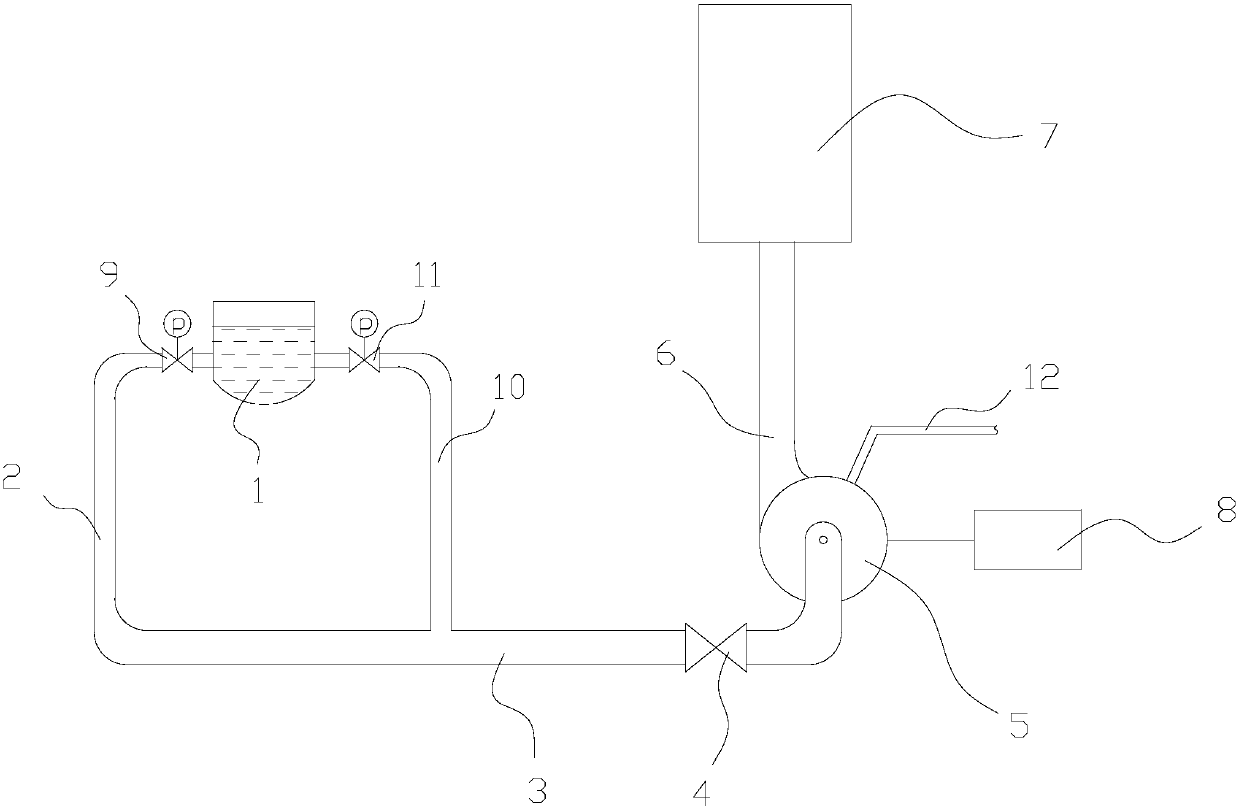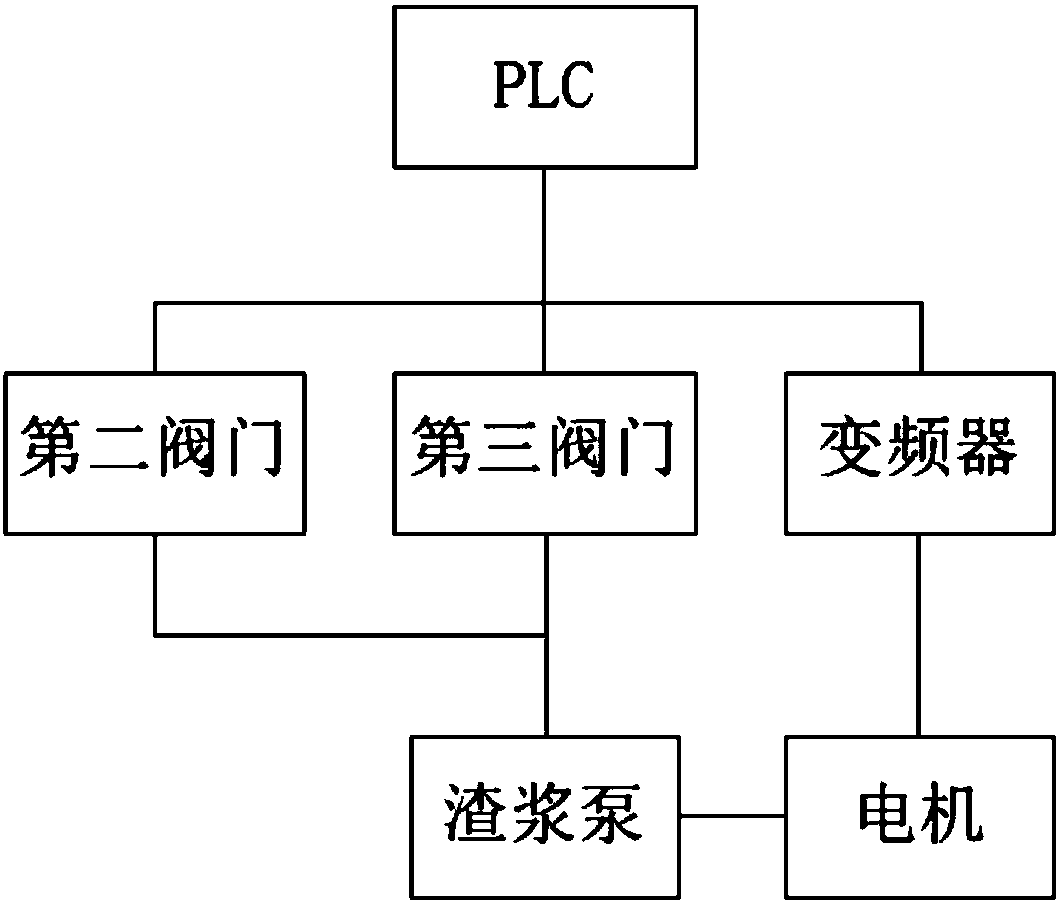Slag slurry treatment system and method
A slurry treatment system and treatment method technology, applied in the direction of sludge treatment, separation methods, chemical instruments and methods, etc., can solve the problems of unfavorable slurry treatment efficiency, waste of energy, empty running of slurry pumps, etc. The effect of slurry treatment efficiency
- Summary
- Abstract
- Description
- Claims
- Application Information
AI Technical Summary
Problems solved by technology
Method used
Image
Examples
Embodiment Construction
[0023] The technical solutions in the embodiments of the present invention will be clearly and completely described below in conjunction with the accompanying drawings in the embodiments of the present invention. Obviously, the described embodiments are only part of the embodiments of the present invention, not all of them. Based on the implementation manners in the present invention, all other implementation manners obtained by persons of ordinary skill in the art without making creative efforts belong to the scope of protection of the present invention.
[0024] see Figure 1 to Figure 2 A preferred embodiment of the present invention provides a slurry treatment system, including a settling tank 1 for settling sludge, the bottom of the settling tank 1 leads to a first pipeline 2, and the first pipeline 2 is connected to the second Two pipelines 3, the second pipeline 3 is connected to the inlet of the slurry pump 5 through the first valve 4, the outlet of the slurry pump 5 i...
PUM
 Login to View More
Login to View More Abstract
Description
Claims
Application Information
 Login to View More
Login to View More - R&D
- Intellectual Property
- Life Sciences
- Materials
- Tech Scout
- Unparalleled Data Quality
- Higher Quality Content
- 60% Fewer Hallucinations
Browse by: Latest US Patents, China's latest patents, Technical Efficacy Thesaurus, Application Domain, Technology Topic, Popular Technical Reports.
© 2025 PatSnap. All rights reserved.Legal|Privacy policy|Modern Slavery Act Transparency Statement|Sitemap|About US| Contact US: help@patsnap.com


